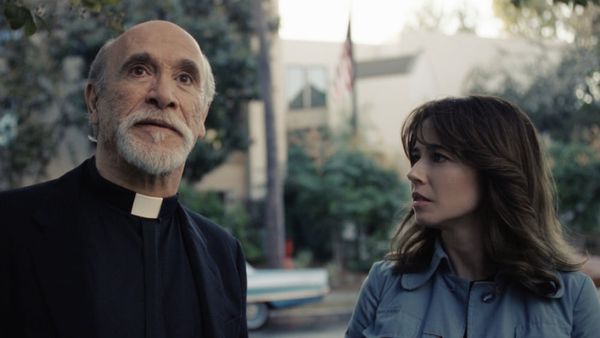Eye For Film >> Movies >> The Curse Of La Llorona (2019) Film Review
The Curse Of La Llorona
Reviewed by: Angus Wolfe Murray

Why is a curse more frightening than a haunting? Why is a hat warmer than a slap on the face? Why are these questions absurd? The answers are don’t care, don’t know and don’t be so annoying.
In 1700-and-something a mother drowns her children and later herself. It happens in Mexico. Twenty years ago in Los Angeles, the children of a social worker (Linda Cardellini) are kidnapped by the spirit of the dead woman, La Llorana (Marisol Ramirez), and taken to water. They are saved in time.

And so battle commences for the lives of the innocent children. The mother seeks help from the local priest who says he doesn’t believe in the mumbo or the jumbo and suggests she should ask Rafael Olvera (Raymond Cruz), an ex-priest who has a reputation of understanding the language of lost spirits.
The complexity of this multigenerational chiller is difficult to follow and sinks into the darkness of the waves. Three hundred years is a long time to wait for revenge except it’s not even that. Killing now does not excuse killing then, or make sense of either.
A ghostly apparition may be a visual screamer but seldom, if ever, indulges in murder. A curse comes equipped with precise orders, often involving death, violent or otherwise. The spirit of the curse does not flinch from physical contact. A ghost, on the other hand, is a see through, walk through, figment of someone else’s imagination.
Llorana is a flesh and bloody resurrection who appears to have powers of persuasion and liquid resolutions. She talks. She kills. She is to be avoided at all costs.
Reviewed on: 05 May 2019
















